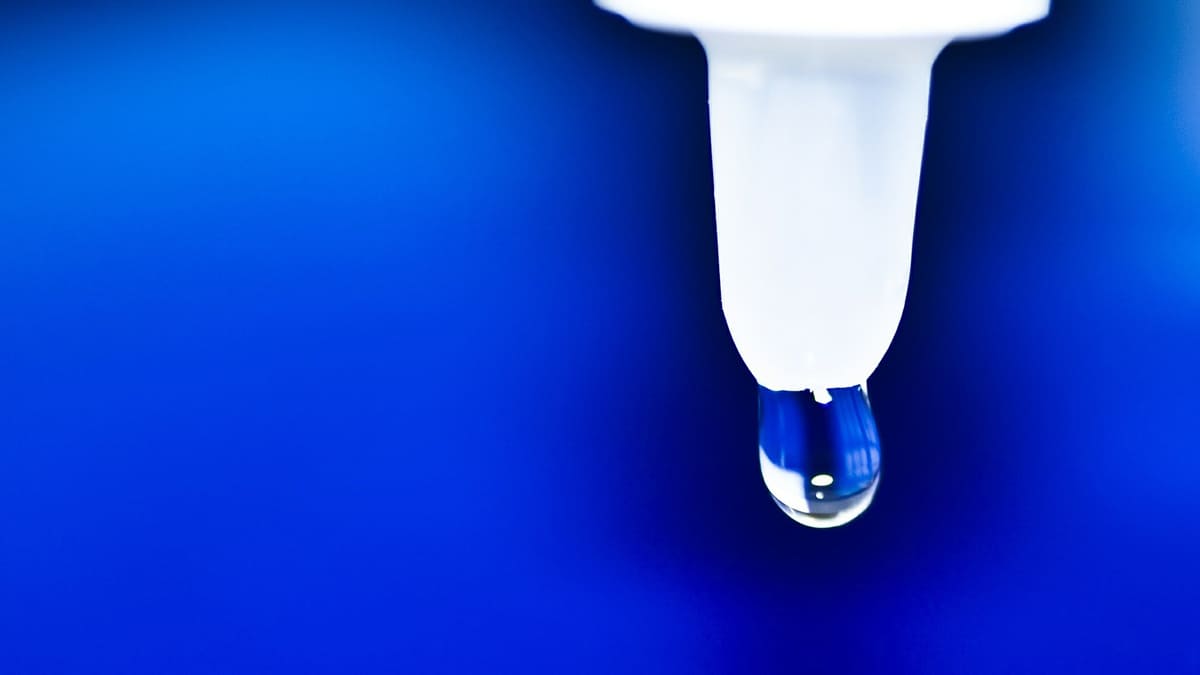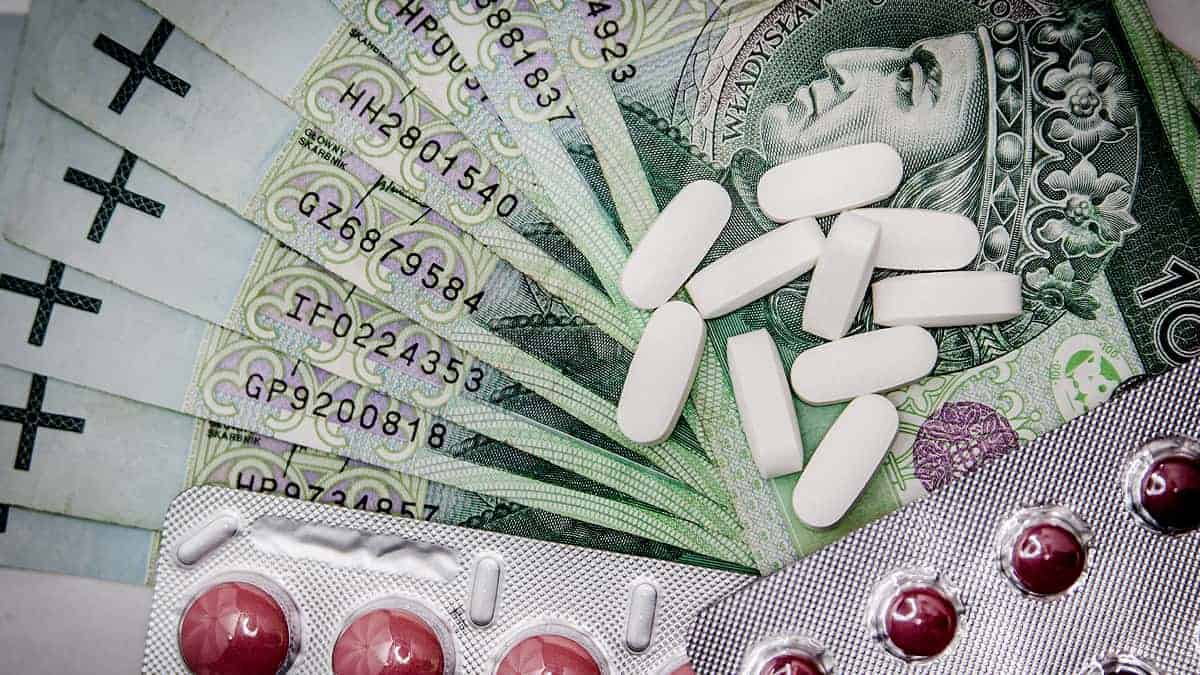Why is Restasis So Expensive?
high drug prices

Expensive and unaffordable prescription drugs have become an unfortunate fact of life for millions of Americans, even if they have health insurance and prescription drug coverage (but especially if they don’t). Restasis, which is manufactured by Allergan, is part of a long list of prescription medications with soaring costs for consumers in recent years.
Restasis (cyclosporine) is an immunosuppressant drug prescribed to treat chronic dry eye syndrome, which causes limited tear production and dry, irritated eyes due to inflammation.

How Much Does Restasis Cost in the United States?
The U.S. Food and Drug Administration (FDA) approved Restasis for the treatment of chronic dry eye disease in 2003. Within the first year of its release, Restasis sales accounted for almost $100 million for Allergan. Today, Restasis accounts for over $1 billion in sales for the drug maker. In fact, Restasis is one of Allergan's top selling drugs, second only to Botox, one of Allergan's other blockbuster medications.
The numbers vary, but different studies place the prevalence of chronic dry eye syndrome among American adults at anywhere from four million to over 16 million. Dry eye syndrome occurs when tear production is lower than normal, possibly due to an inflammatory problem. Restasis drops are available with a prescription and have become a very common ophthalmology treatment in the United States.
A generic alternative for Restasis is available internationally and can be a way to save money rather than buying Restasis online as a brand product.
Due to a lack of price controls or government oversight and regulation, the cost of Restasis fluctuates depending on factors like the type of insurance you have, manufacturer rebates and discounts, and where the prescription is ultimately filled.
Restasis is covered by some American insurance plans including Medicare, but the price tag is still astronomically high for prescription eye drops used to treat a fairly common and non-life-threatening condition. The retail cash price for Restasis is approximately $700 (the average Restasis cost with coupons, rebates, or insurance co-pays is around $586 for a monthly supply).
On the surface, the popularity of Restasis eye drops might explain why the drug is so expensive, and how it has become so profitable for Allergan over the last two decades, at least by American standards.
However, some of the tactics used by Allergan to promote the sale of Restasis, and to avoid the potential competition of a cheaper generic alternative highlight some of the main problems at the heart of the pharmaceutical industry in the United States. It can also help explain why Americans continue to pay so much more than their Canadian neighbors for the same medications.

Pharmaceutical Industry Marketing and Branding Deliver Billions of Dollars in Profits
It's no secret that the pharmaceutical industry spends more money on marketing, branding, and advertising in the United States than it does on research and development. According to industry research, the pharmaceutical industry spends as much as $30 billion in a single year to market their products to American consumers.
That can take the form of ads, TV commercials, awareness campaigns, and even misleading research and data from industry front groups paid to promote new (and often more expensive) drugs to Americans.
In addition to spending billions to market their products and services directly to their customers, the pharmaceutical industry also spends a significant amount of its advertising budget pitching their products and devices to doctors and healthcare professionals, who then incorporate them into their treatment plans for patients.
According to a study published by JAMA: The Journal of the American Medical Association, spending on marketing and advertising in the medical field practically doubled between 1997 and 2016, from just over $17 billion to $30 billion in just two decades. According to JAMA, promotional spending doesn't just affect the cost of prescription drugs, like Restasis, but can also affect everything from public perception to lab testing and reporting on the safety and effectiveness of prescription drugs.
Getting accurate numbers can be difficult because the pharmaceutical industry naturally disputes the claims that they spend more on marketing and administrative activities than on research and development. Without any effective regulation or oversight from the American government, there is little incentive for drug manufacturers like Allergan to be forthcoming with this information.
Another widely disputed figure is how much it actually costs to develop prescription drugs. The costs will obviously vary from one drug to the next, but recent estimates range from $648 million to over $2 billion to bring a single drug to market. Pinpointing an exact figure is difficult because there are so many variables, but like any consumer product, American consumers can expect to ultimately pick up the costs.
However, the biggest factor in determining how much Restasis and other prescription drugs cost in the United States is arguably profit. Even drugs that are relatively cheap to manufacture and that have been on the market for decades are inflated to boost profits. In fact, some of the biggest industry scandals in recent years have involved the doubling or tripling of the cost of lifesaving medications, like the EpiPen and asthma inhalers, in a relatively short period of time, often with little to no changes to the medication itself.
With no regulations and little to no real competition in many cases, the cost of many of the drugs that Americans rely on for their health and wellbeing have skyrocketed in recent years, and will continue to soar with no genuine relief in sight.
A Stranglehold on Competition by the Pharmaceutical Industry
A free and open market relies on strong competition to ensure that consumers are getting the best value for their money. However, the pharmaceutical industry in the United States consists of a few virtually impenetrable monopolies, which makes it almost impossible for cheaper prescription drugs to enter the market, regardless of their quality or effectiveness.
Faced with medication costs that are already grossly inflated due to a lack of price regulation, Americans are stuck with little to no choice in where to get the drugs they need locally for their health and wellbeing. Restasis is an excellent example of this problem. Americans are forced to pay over $600 for a monthly supply of eye drops, even with coupons and insurance coverage.
In most cases, pharmaceutical companies rely on the United States' complicated and opaque patent system to secure their monopolies over their drugs. Even when the research and development of a drug (whether it's new to the market or being repurposed to treat a new condition) is subsidized with taxpayer dollars, pharmaceutical companies are often granted favorable patent deals that allow them to control access — and ultimately the cost of prescription medications.
Patent terms can extend for decades, making it virtually impossible for more affordable alternatives to reach consumers. If that isn't bad enough, making minor changes to the composition or delivery system of a drug can be enough to qualify for a patent extension or fresh patent, stifling the competition even longer.
In the case of Restasis, Allergan went to even greater lengths to prevent competition for one of its most popular and profitable drugs. In a move that surprised and caused concern among even some of the most cynical pharmaceutical industry watchdogs and critics, Allergen made an unusual deal with the St. Regis Mohawk tribe in New York state to escape what is already an arguably lax patent regulation system in the U.S.
As a sovereign nation, tribes like the St. Regis Mohawk are exempt from and operate outside of federal jurisdictions in the U.S., including patent regulations. Allergan transferred its patents for Restasis, set to expire in 2024, to the tribe and struck a deal to pay them licensing fees and a percentage of profits as a way to get around patent challenges and competition from generic dry eye medications.
Allergan's attempts to shield themselves from U.S. patent law ultimately failed, and they lost their bid in several court rulings, which were settled by the U.S. Supreme Court when they refused to hear the case, leaving the lower court rulings intact.
They may have lost that particular battle, but it goes to show the lengths that pharmaceutical companies will go in order to control the market and stifle competition in the United States to protect their profits.

How to Lower the Cost of Your Restasis Prescription
Dry eyes can be uncomfortable and even affect a person's productivity at work and quality of life, making it difficult to wear contact lenses, and causing sensitivity to light. As more and more people spend more time than ever before in front of screens, symptoms like chronic dry eye will probably continue to grow and become more common.
However with over 40% of Americans unable to afford $400 for an emergency, and with millions recently having lost their employer sponsored health insurance coverage due to layoffs amid the coronavirus pandemic, $600+ for a monthly supply of Restasis can be virtually impossible to afford.
Manufacturer coupons and assistance programs are available for many prescription drugs, and can offer significant discounts in some cases, but there are no guarantees and many people don't qualify. It's always a good idea to check with the manufacturer and individual insurance plans for rebates and assistance programs that can lower drug costs.
Is Restasis Cheaper in Canada and Internationally?
Ordering prescription medications like Restasis from a certified online Canadian pharmacy is a reliable way for Americans to save money on expensive medications. Buying Restasis from a Canadian International Pharmacy Association approved international pharmacy website is another way too. In fact, for many people, it's the only way that they can actually afford to continue taking the medications they need, even when they have health insurance and prescription drug coverage.
Pharmaceutical giants like Allergan sell their products in Canada and elsewhere, but unlike in the U.S. they don't enjoy a blank check and unregulated market that allows for price gouging. The Canadian government negotiates prices directly with drug manufacturers, and has strict quality control standards in place to ensure the safety and efficiency of the medications on the market.
There are many myths and misconceptions about international and Canadian pharmacies, and while there are bad actors in every market, the truth is that the Canadian pharmacy industry is highly regulated by the government and the costs are much lower because of price controls, not due to lower quality.
At NorthWestPharmacy.com, single use vials of Restasis cost a fraction of what they do in the United States for the same brand prescription product and for the generic alternative, and are shipped directly to your home for your convenience so that you save time and money.
Are you paying too much or struggling to afford your prescription medications? We can help. For more information about how to order medication from a certified online Canadian pharmacy, contact us today to speak with a member of our customer service team. Call our toll-free number 1-866-539-5330 to speak to a representative, or you can also send us an email.